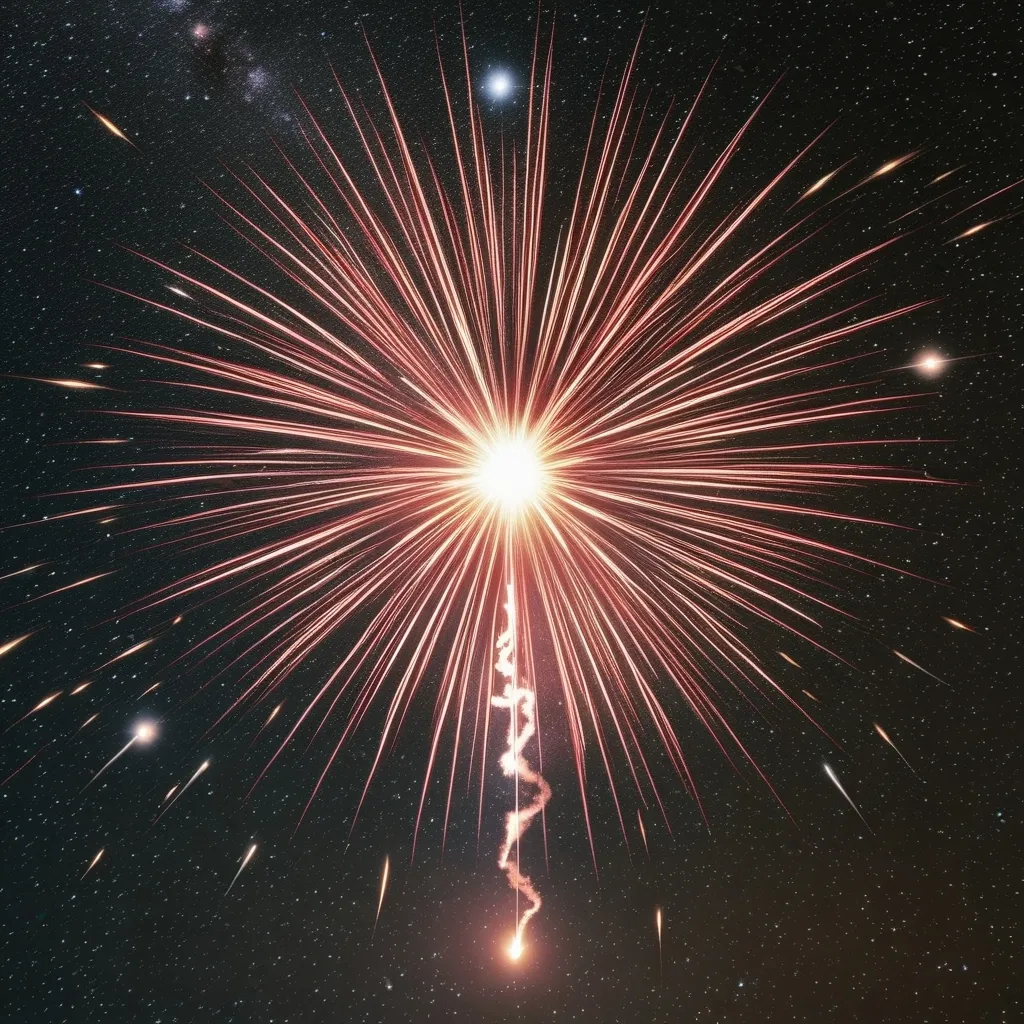Fast radio bursts, or FRBs, are like cosmic fireworks, lighting up the vast expanses of space with their brief yet powerful flashes of radio waves. Discovered in 2007 by an astronomer and his student at the Parkes Observatory in Australia, these intense outbursts, particularly the first known as the Lorimer Burst, have kept the scientific community on its toes, trying to solve what might be one of space’s biggest mysteries.
Picture this: a blink of energy so potent that it emits as much energy in just a fraction of a millisecond as the Sun throws out in three whole days. But by the time these bursts reach our planet, they’re whisper quiet, much less detectable than even a faint mobile signal sent from the Moon.
Now, let’s dive a little deeper. FRBs are a fascinating mix of qualities—they last only fractions of a millisecond to a few seconds, yet they are astonishingly bright and broad in frequency. These signals don’t seem to prefer any specific direction in the sky, so astronomers figure that they definitely come from beyond our Milky Way galaxy, hinting at their extragalactic origin.
The signals from these bursts are peculiar in their dispersion as they sweep downwards in frequency. This quirk occurs as the waves travel through the interstellar medium, coloring the data with clues about their journey. Scientists quantify this dispersion with something called the dispersion measure, which helps estimate how far these signals have traveled and the environments they’ve passed through.
There’s plenty of evidence that FRBs come from other galaxies. One piece of evidence is how the dispersion measure shows these bursts have traversed vast stretches of ionized plasma, much more than you’d expect if they were from within our own galaxy. It’s like trying to spot a firework from across a city—it’s bright, yes, but signals its origin from far away.
Some FRBs are one-time wonders, but a subset of them repeats, and that changes everything. The first repeating FRB, named FRB 121102, changed the game when discovered in 2015. These repeats are sort of like an interstellar drumbeat, not always in rhythm but impossible to ignore. While some, like FRB 180916, show a regular pattern, most repeat at their own erratic pace, becoming both a puzzle and an inspiration for scientists trying to figure them out.
The true origins of these bursts remain a bit of a brain-teaser. Hypotheses abound, of course—maybe they’re from magnetars, which are neutron stars with super strong magnetic fields. Or maybe even exotic scenarios like the merging of massive stars, neutron stars, or black holes. There’s even wild speculation of extraterrestrial activity, though that’s mostly in the realm of science fiction, not especially grounded in evidence.
Catching these signals is no small effort, seeing as they’re ridiculously brief and faint. The Canadian Hydrogen Intensity Mapping Experiment (CHIME) has been doing phenomenal work, picking up thousands of these bursts as it sweeps the northern sky. Other telescopes pitch in too, like those at Parkes and the now-lost Arecibo in Puerto Rico, each having made significant contributions to understanding FRBs.
By investigating these signals, scientists unlock secrets not just about the bursts themselves but also about the universe. FRBs help map the universe, shedding light on gas and magnetic fields spread across unfathomable distances. Understanding their dispersion tells us a bit about the cosmic web they travel through, offering insights into the universe’s architecture.
The myriad of repeating FRB sources is invaluable, offering clues about whether these events stem from similar origins or if they’re completely different phenomena. This divide could potentially unlock new understandings of space-time and cosmic events.
When you’re studying FRBs, every detection is like listening for a whisper of an echo bouncing through the cosmos—sometimes you hit a jackpot and find a repeating echo. For the folks at CHIME in British Columbia, and everywhere else fervently searching the stars, each burst comes with just that bit of excitement and wonder.
In essence, FRBs invite scientists to peer into the universe’s most energetic and unpredictable events. While the search for the answers to FRBs’ origins pushes forward, it does so with the promise of enhancing our grasp of the universe’s grand, energetic ballet. As researchers continue piecing together these scattered cosmic clues, they find themselves closer to understanding not just FRBs, but the wider, awe-inspiring story of the cosmos unfolding before us all.





